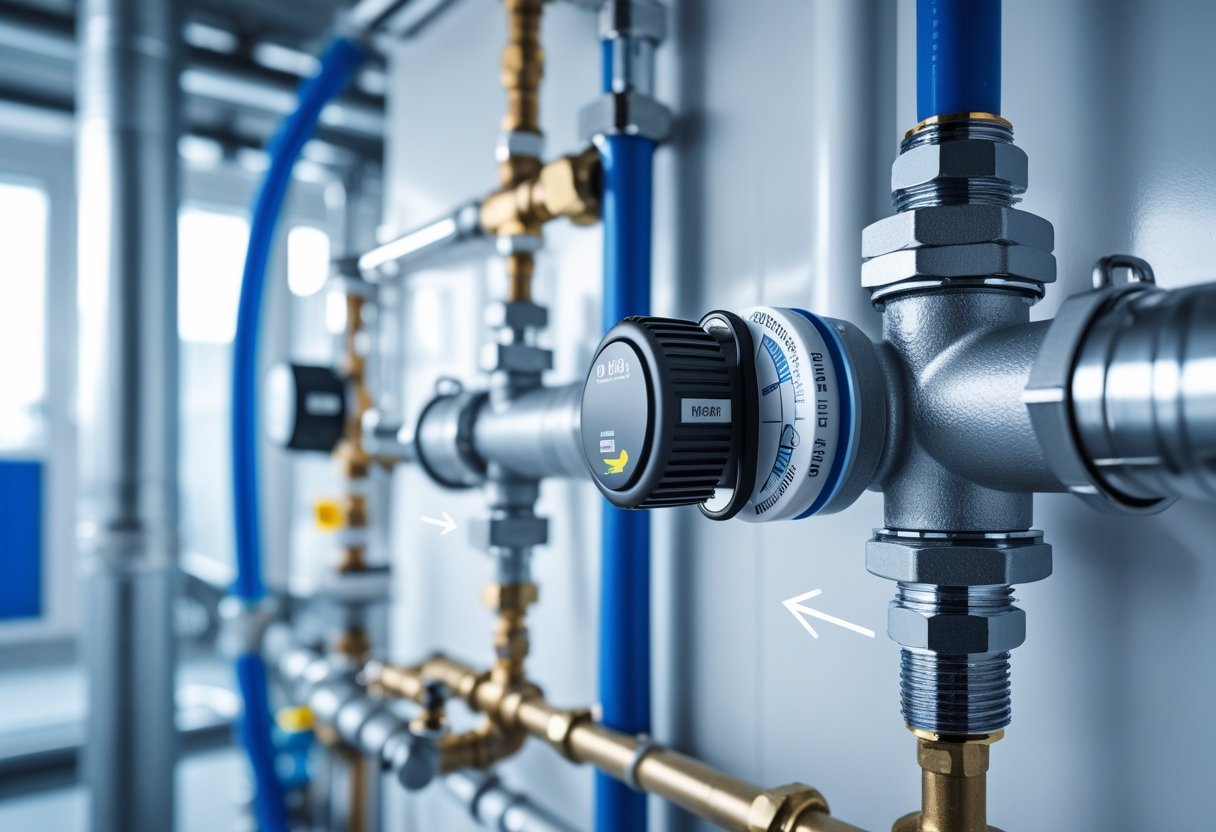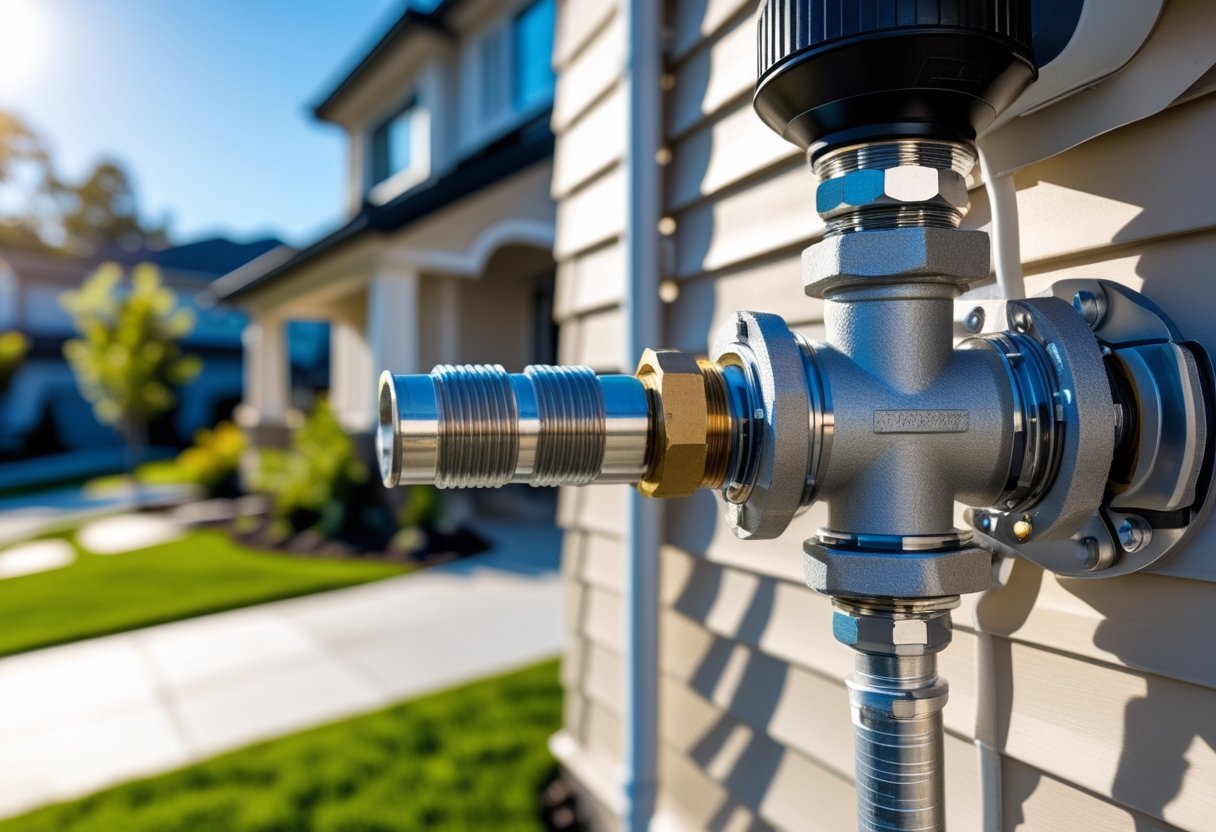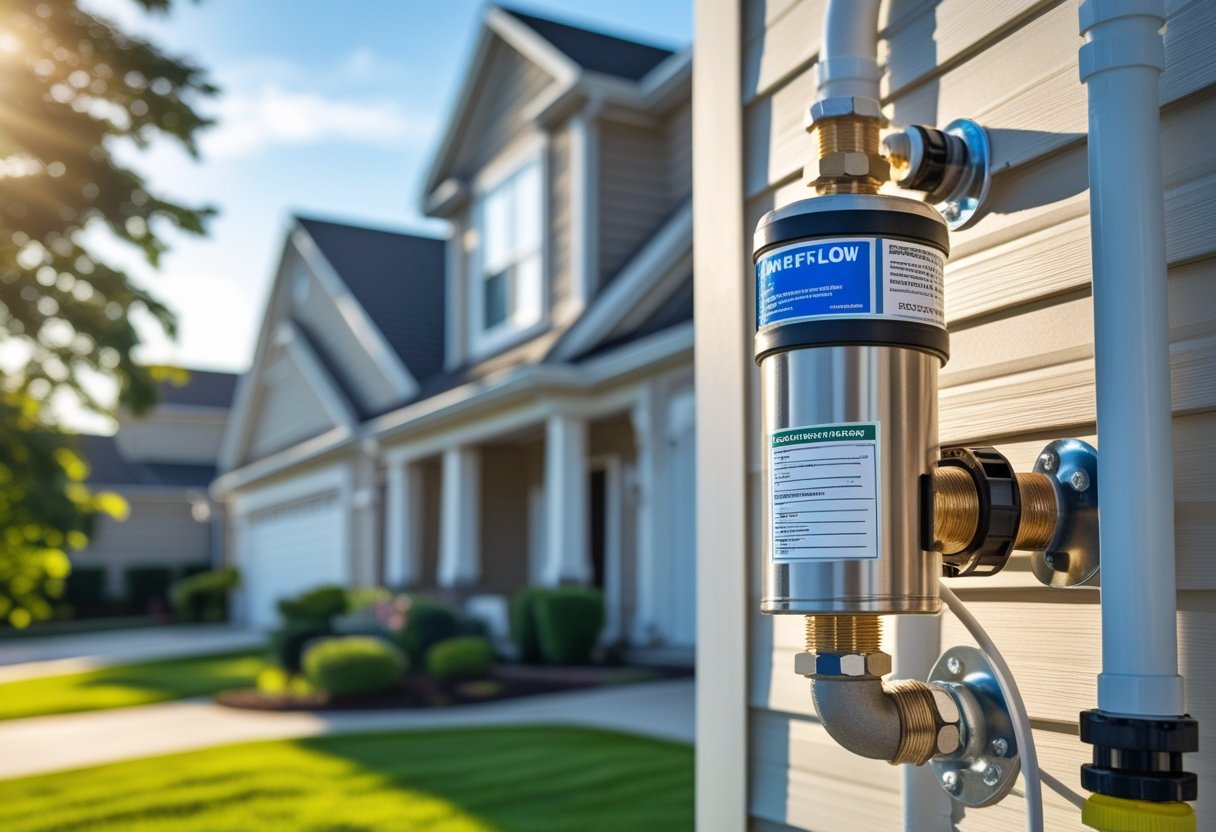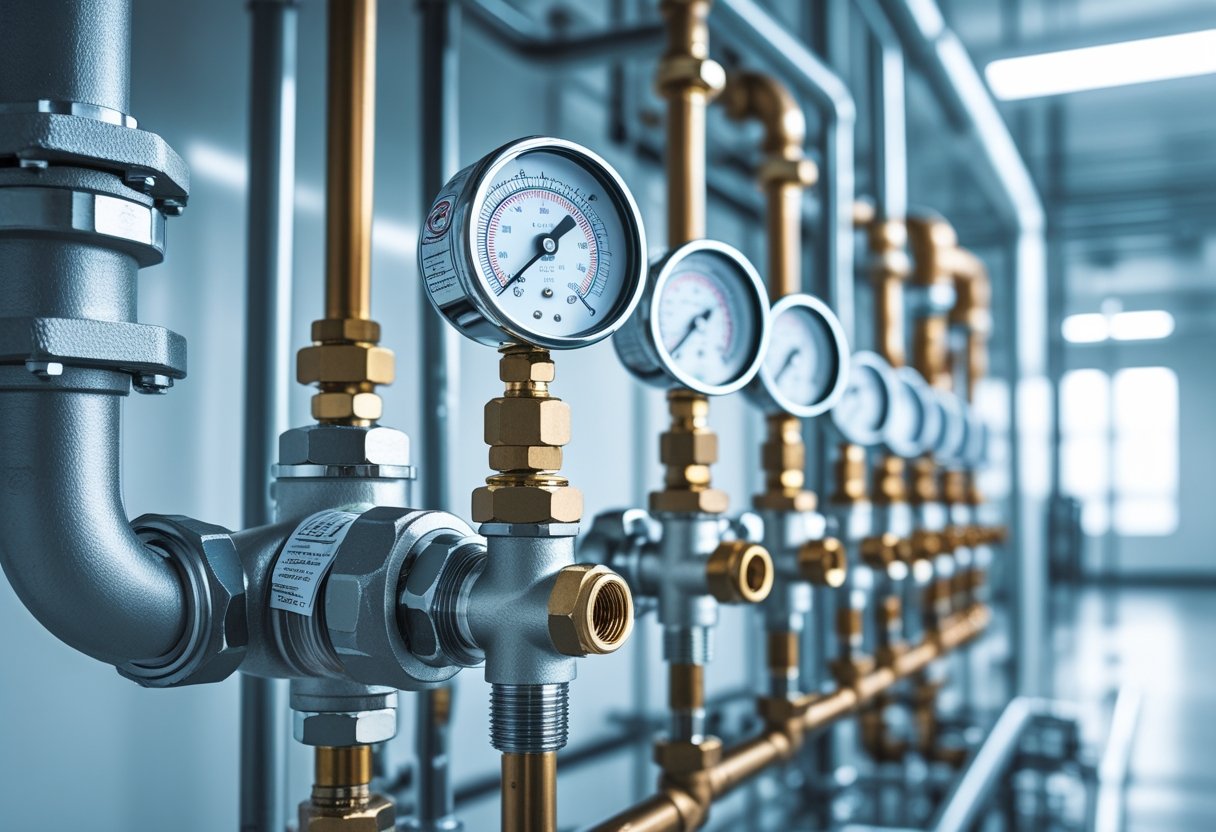Cross connection happens when a pipe carrying clean water links to a source that might be dirty or unsafe. This connection can cause backflow, which pushes contaminated water back into your clean water supply.
This is a big problem because it risks your health and the safety of your home’s water. Backflow usually occurs when water pressure changes suddenly, like during a pipe break or heavy water use nearby.
If a cross connection exists, dirty water can flow backward through your plumbing, mixing with your drinking water. Understanding how this works helps you protect your water from contamination.
Understanding Cross Connection
Cross connections can create a direct link between clean water and sources that may be unsafe. This connection allows water to flow in the wrong direction, risking contamination of your drinking water.
Definition of Cross Connection
A cross connection happens when a clean water pipe connects to a source that could carry dirty or non-potable water. This connection can let harmful substances enter your home’s safe water supply.
In normal conditions, water flows one way—from the clean supply to your faucets. If pressure changes, water can flow backward, bringing contaminants from unsafe sources.
This backward flow is called backflow.
Types of Cross Connections
There are two main types of cross connections: direct and indirect.
- Direct cross connection happens when clean and dirty water physically mix without any barrier. Example: a garden hose submerged in a swimming pool.
- Indirect cross connection occurs through an intermediate space, like a hose connected to a faucet but not submerged.
Both types can allow contaminants to get into your clean water.
Common Sources in Plumbing Systems
Common places where cross connections happen include irrigation systems, boilers, fire sprinkler systems, and industrial equipment. For example, irrigation lines can connect back to your household water.
If pressure drops, lawn chemicals or dirt can flow backward into your drinking water. Other sources include hose bibs, washing machines, and sometimes swimming pools.
Anything hooked into your plumbing that can hold dirty water may cause backflow if not properly protected.
What Is Backflow?
Backflow happens when water flows the wrong way in your plumbing system. This can cause dirty or contaminated water to mix with your clean water supply.
Definition of Backflow
Backflow is the unwanted reversal of water flow in a pipe. Instead of water moving in one direction—from your water supply to your home—it moves backward.
This backward flow can happen when pressure changes in your plumbing system push water the wrong way. Backflow usually occurs due to a cross connection.
When backflow happens, dirty water can enter the clean water lines, causing health and safety concerns.
Backpressure and Backsiphonage
Two main causes of backflow are backpressure and backsiphonage. Backpressure happens when pressure in the system is higher than the supply pressure.
This can push contaminated water back into your drinking water lines. Backsiphonage is caused by a drop in water pressure, like during a water main break or heavy demand.
This drop creates suction, pulling contaminants into the clean water system. Both backpressure and backsiphonage can occur suddenly.
They often come from everyday situations like irrigation systems, hoses, or faulty plumbing.
Potential Hazards of Backflow
Backflow can lead to serious health risks. When dirty or polluted water flows back into your drinking water, it can carry harmful bacteria, chemicals, and waste.
This contamination can cause illness or infection if you drink or use the water. It also affects the safety of your entire plumbing system and community water supply.
Using backflow preventers and regular testing are key steps to avoid these hazards.
How Cross Connection Causes Backflow
Cross connections can let dirty water mix with your clean water supply. This happens when plumbing allows water to flow backward.
Changes in pressure or unsafe plumbing setups often cause this. Knowing the types of connections and how water pressure works helps you keep your water safe.
Direct Versus Indirect Connections
A direct connection means the clean water line is physically joined to a source of possible contamination. For example, if a garden hose is hooked straight to a contaminated tank, dirty water can easily flow back.
Direct connections are risky because there's no barrier stopping the flow of unsafe water into your potable system. An indirect connection happens when contaminated water is close to clean water but separated by a small gap, like an air gap or a container.
This gap helps prevent backflow. While safer than direct connections, indirect links can still cause problems if pressure drops or back-siphonage occurs.
You can avoid both types by using backflow preventers and proper plumbing design.
Pressure Changes and Water Flow Direction
Water usually flows from clean to dirty areas because of pressure. But pressure in pipes can change.
When pressure in the clean water line drops — such as during a water main break or heavy water use — water can reverse direction. This reversal, called backflow, sucks water from unsafe sources back into your drinking water.
Pressure can also increase on the opposite side, forcing dirty water into clean pipes. Both pressure drops and rises cause dangerous contamination risks.
You can manage these risks by installing devices like backflow preventers. They stop water from flowing backward, no matter how pressure changes happen.
Cross Connection Scenarios Leading to Backflow
Common examples of cross connections include:
- A garden hose left submerged in a swimming pool or bucket.
- Irrigation systems linked to the home's water supply without a backflow device.
- Boiler or chemical feed systems connected directly to drinking water lines.
If water pressure drops or changes, contaminated water like pool water, pesticides, or chemicals can flow back into your pipes.
By spotting potential cross connections at your home and adding backflow protection, you can stop these risks quickly. Regular inspections and maintenance also help keep your system safe.
Risks Associated With Cross Connection and Backflow
Cross connections can cause backflow, which lets unwanted substances mix with your clean water. This creates risks like dirty water entering your pipes and health problems for people using the water.
Contaminant Entry Into Drinking Water
Cross connections link your clean water system to sources that might be dirty, like irrigation systems or chemical tanks. When water pressure drops suddenly, water can flow backward through the cross connection.
This backward flow pulls contaminants into your drinking water. Contaminants could include bacteria, chemicals, or other dangerous materials.
These can spoil the water, making it unsafe to drink, cook, or bathe with. Proper backflow preventers stop this from happening by blocking reverse flow.
If these devices fail or aren’t installed, you risk contamination.
Health Hazards for Households and Communities
When backflow brings contaminants into your water, it can cause illness. You might experience stomach problems, skin irritation, or worse.
People with weak immune systems, children, and elderly family members are especially at risk. Communities can face wider health problems if backflow affects public water supplies.
This can lead to outbreaks of diseases caused by bacteria or chemicals in the water.
Examples of Real-World Incidents
In some neighborhoods, backflow events caused sickness because chemicals from lawn care or industrial sites entered drinking water through cross connections. In one case, a hospital’s water supply was contaminated, putting patients at risk until the problem was fixed.
These incidents show how important it is to inspect, maintain, and test backflow devices regularly. Skipping these steps can lead to costly repairs and unsafe water.
Preventing Cross Connection and Backflow
To keep your water safe, you need to stop any connections where dirty water could flow back into your clean water supply. Using the right devices, checking your system regularly, and staying on top of maintenance are key to preventing backflow.
Backflow Prevention Devices
Backflow prevention devices are your first line of defense. These devices stop water from flowing backward into your clean water system.
Common types include check valves and reduced pressure zone (RPZ) valves. They are often installed where hoses, irrigation systems, or other equipment connect to your water lines.
You should make sure these devices are the right type for your system and installed correctly. Older or faulty devices might not work properly, so upgrading to newer models helps maintain safety.
Devices need to meet the local water district’s rules to ensure full protection.
Routine System Inspections
Regular inspections catch problems before they lead to contamination. You or a certified professional should check your plumbing and backflow devices at least once a year.
Inspections look for leaks, damage, or incorrect connections that could cause backflow. During inspections, you’ll want to test how well each device works under current water pressure conditions.
Testing confirms everything is functioning as it should. Keeping detailed records of these inspections helps you meet local regulations and track your system’s health over time.
Maintenance Best Practices
Maintenance keeps your backflow prevention system working smoothly. Clean devices regularly to avoid debris buildup that can block valves and cause failure.
If a device isn’t working right, fix or replace equipment quickly. Protect devices from physical damage, theft, or tampering by using durable cages or secure covers.
Follow manufacturer instructions for maintenance and use qualified technicians for repairs. Keeping your system maintained means safe water and fewer emergencies.
Recognizing the Signs of Cross Connection Issues
Knowing the signs of cross connection problems helps you protect your water supply. Look for changes in water quality and pressure.
Paying attention early can stop bigger problems and keep your water safe.
Warning Signs in Your Water System
You might notice unusual tastes, colors, or smells in your water. If water tastes metallic or smells like chemicals, it could mean contamination from a cross connection.
Cloudy or discolored water is another warning. Sudden drops or spikes in water pressure are also red flags.
These changes might cause backflow, letting unsafe water flow backward into your clean water system. Leaks or damp spots near plumbing devices could indicate backflow issues.
You might also see water pooling where it shouldn’t be, suggesting a faulty backflow preventer or cross connection.
When to Contact a Professional
If you see strange water quality or pressure changes, call a plumber or backflow specialist. Professionals can test your system for backflow and inspect cross connections.
Annual backflow testing helps catch these issues before they get worse. If a test fails or you notice leaks, repairs or replacements may be necessary.
Don’t wait if you suspect backflow. Early professional help can protect your home’s water and keep your system compliant with local rules.
Summary and Key Takeaways
A cross connection happens when clean water pipes link to sources that are not safe, like irrigation systems or garden hoses. This connection can cause backflow, which means dirty water flows backward into your clean water supply.
This risks contaminating your drinking water with harmful pollutants. To protect your water, you need to understand the common causes of backflow, such as changes in water pressure and poor plumbing setups.
Installing backflow prevention devices is one of the best ways to stop this problem.
What you should know:
- Cross connections create a direct path for contaminants to enter clean water.
- Backflow often happens during pressure drops or back-siphonage.
- Backflow preventers use valves or air gaps to keep water flowing only one way.
- Regular testing and maintenance keep your system safe.
Keep your plumbing well-maintained and use the right devices to protect both your home and your community from contamination.
If you need help, a reliable backflow test or repair service ensures your system meets local safety rules. Professionals can guide you through testing, repairs, and installation.
Frequently Asked Questions
Backflow happens when water flows backward, carrying unwanted substances into your clean water system. Cross-connections create an easy path for this to happen when safe water links with unsafe water or other contaminants.
What is the relationship between backflow and cross-connections in water systems?
A cross-connection is a direct link between clean drinking water and any non-potable source. Backflow occurs when water moves backward through this link, bringing contaminants into your clean water supply.
What steps can be taken to prevent backflow originating from cross-connections?
You can prevent backflow by installing backflow preventers and maintaining your plumbing regularly. Make sure no hoses or pipes are submerged in unsafe water.
Regular professional testing also helps keep your system safe.
How can a cross-connection in plumbing lead to contamination?
When water pressure drops, contaminated water from a cross-connection can flow back into your clean water pipes. This backward flow carries harmful substances like chemicals or bacteria into your drinking water.
What are some common examples of cross-connections that could cause backflow?
Common examples include garden hoses submerged in pools or buckets. Irrigation systems linked to household water lines and any pipe connected to non-potable water sources without proper protection can also cause backflow.
Why is backflow prevention crucial in cross-connection control?
Backflow prevention stops dangerous substances from entering your clean water. It protects your health and meets local water safety regulations.
What are the potential consequences of a cross-connection occurring within a plumbing system?
A cross-connection can let contaminated water enter your home’s water supply. This can create health risks and lead to possible legal issues.
You might also face costly repairs if your plumbing or backflow preventers fail.











